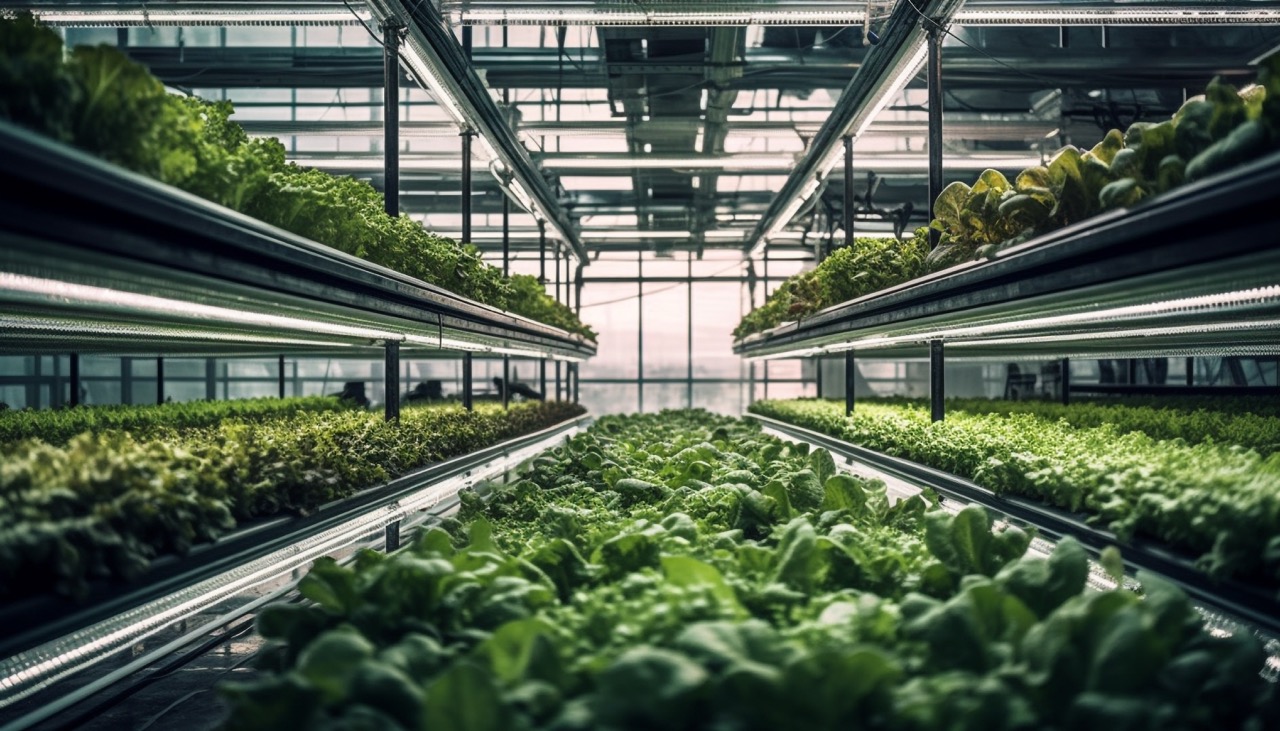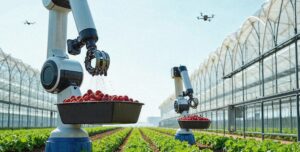As rapid urbanization reshapes cities across Asia, the challenge of ensuring sustainable local food production has never been more critical. In densely populated city-states like Singapore, Brunei, and Hong Kong, where arable land is limited, vertical farming is gaining traction as a viable solution. By utilizing vertical space and controlled-environment agriculture, this innovative approach holds the potential to enhance food security, reduce dependence on imports, and promote sustainability. However, despite its promise, vertical farming faces significant economic, technological, and regulatory challenges that hinder widespread adoption and success.
This article addresses some of the biggest challenges and outlines the promise of vertical farming as a transformative solution for urban food production in Asia, emphasizing its sustainability, efficiency, and potential for economic growth.
Vertical Farming is at a Critical Juncture
With increasing concerns over food supply chain disruptions, climate change, and population growth, governments across Asia are prioritizing resilient agricultural solutions to enhance food security and reduce dependence on imports. Singapore’s ambitious “30 by 30” initiative, aiming to meet 30% of the nation’s nutritional needs through local production by 2030, underscores the urgency of investing in sustainable and high-tech farming methods. In this push for food resilience, vertical farming has emerged as a promising solution, leveraging controlled environment agriculture, automation, and AI-driven optimization to maximize crop yield within Singapore’s land-scarce urban landscape.
However, despite its potential, vertical farming remains a challenging industry to sustain in the long term. While technological advancements enable higher productivity per square meter, reduced water consumption, and pesticide-free cultivation, several high-profile ventures have struggled due to financial and operational difficulties. High capital expenditure, energy-intensive operations, and the complexities of scaling up while maintaining profitability have proven to be significant hurdles. Notably, companies such as VertiVegies and I.F.F.I. ceased operations after facing scalability challenges, while GroGrace continues to operate but faces ongoing financial pressures. These cases highlight the delicate balance between innovation, economic viability, and long-term sustainability in urban farming.
Brunei and Hong Kong show similar trends, acknowledging urban farming as a food security strategy. However, steep initial investment costs, market saturation, particularly with common crops like lettuce and herbs, and stringent regulatory frameworks pose significant barriers to success.
In city-states, soaring real estate prices intensify competition for land, often prioritizing housing and commercial development over local food production. Their reliance on global supply chains makes them particularly vulnerable to disruptions from geopolitical tensions, climate change, and pandemics – threatening both food security and economic stability. Additionally, sustainable urban development remains a challenge, requiring a delicate balance between economic growth, infrastructure expansion, and environmental conservation within limited space.
Hard Truths – The Reality of Scaling
While vertical farming has gained attention, it is still a long way from widespread adoption in the industry. High operating costs, limited crop variety, regulatory constraints, and funding challenges continue to hinder its scalability. If vertical farming is to become a sustainable, competitive force in food production, these obstacles must be addressed head-on.
One of the biggest hurdles for vertical farming is its steep operating costs. Unlike traditional farms that rely on natural sunlight and open-air environments, vertical farms depend on artificial lighting, climate control, and automated irrigation systems, all of which consume large amounts of energy. Even with advancements in LED technology and automation, electricity costs remain a major burden. And while automation reduces reliance on manual labor, skilled workers are still needed for maintenance, data analysis, and system oversight, further driving up expenses. This cost structure makes it difficult for vertical farms to compete with traditional produce suppliers, particularly in Asia, where fresh vegetables from Malaysia, Thailand, and China flood the market at lower prices. For the average consumer, affordability matters, and without economies of scale, vertical farms struggle to offer competitive pricing.
Another critical limitation is the narrow range of crops that can be successfully grown indoors. Vertical farms typically focus on high-value leafy greens such as lettuce, kale, and herbs because these plants require less space, have shorter growth cycles, and thrive under controlled conditions. However, staple crops like rice and wheat, as well as fruiting vegetables like tomatoes and peppers, are far more challenging to cultivate profitably in vertical settings. For urban Asian consumers who favor a diverse diet that includes root vegetables, seafood, and fresh meat, vertical farms offer only a small fraction of their grocery needs. Without diversification, the industry risks remaining a niche market rather than a fundamental part of the food supply chain.
Securing affordable urban space is another major challenge. While vertical farms are designed to optimize land use, setting up large-scale operations in city centers requires significant real estate investment. Moreover, zoning laws often classify vertical farming under traditional agricultural regulations, leading to bureaucratic hurdles and permit delays. At the same time, greenhouse farming in peri-urban areas provides a viable alternative at a fraction of the cost. These farms benefit from natural sunlight while still offering controlled environments, making them a more cost-effective option for fresh local produce. Furthermore, well-established supply chains ensure a steady flow of affordable vegetables from neighboring countries, reducing the urgency for hyper-local vertical farming.
Unlike tech startups that attract rapid investment, the vertical farming business requires long-term commitment and patience. Many startups in this space depend on venture capital to scale their operations, but the slow return on investment (ROI) poses a significant challenge. Vertical farms demand extensive research, crop optimization, and years of market penetration before achieving profitability. Investors seeking quick returns are often hesitant, preferring high-yield sectors like fintech or e-commerce. While the potential for vertical farming remains strong, its capital-intensive nature means that only well-funded enterprises or those with government backing are likely to succeed in the long run. Without sustained investment and policy support, many startups may struggle to survive beyond their initial funding rounds.
Turning Roadblocks into Resilience
With a growing global population and the escalating impacts of climate change disrupting traditional agriculture, the need for innovation in food production has never been more urgent. Vertical farming has long been championed as a potential solution, but to realize its full potential, the industry must rethink its strategies across energy efficiency, crop diversity, market positioning, supply chain optimization, and policy engagement.
For agribusinesses, these challenges present valuable opportunities. By implementing strategic solutions that enhance scalability and sustainability, companies can drive the growth of vertical farming and strengthen its role in future food systems. The following strategies outline how these obstacles can be transformed into pathways for success.
Rethinking energy efficiency and sustainability
One of the most significant challenges in vertical farming remains its high energy consumption. Investing in renewable energy sources such as solar panels, wind energy, and waste-to-energy systems can help offset electricity costs. But we need to go further. Developing low-energy LED lighting that optimizes spectrum and intensity for plant growth is a game-changer, significantly reducing power consumption without sacrificing yield. Meanwhile, AI-driven climate control systems can precisely manage temperature, humidity, and water use, lowering operational costs while ensuring optimal growing conditions. These innovations are no longer optional; they are essential for the industry’s survival and scalability.
Moving beyond leafy greens
Vertical farming has been dominated by leafy greens, but this narrow focus limits both profitability and food security potential. High-value specialty crops such as medicinal herbs, microgreens, and gourmet mushrooms can offer better margins and attract new markets. To make fruiting vegetables and grains viable, hybrid models that integrate vertical farming with controlled-environment greenhouse systems should be explored. Even more ambitious is the potential to incorporate alternative protein sources like algae, duckweed, or insect protein, creating a truly sustainable and self-sufficient farming ecosystem.
Strengthening market position and consumer demand
If vertical farming is to become a mainstream agricultural solution, it must redefine its market approach. Ultra-fresh, pesticide-free produce should not just be an option, it should be positioned as a premium product catering to health-conscious consumers. This means building strategic partnerships with high-end restaurants, hotels, and food manufacturers that prioritize quality and sustainability. At the same time, leveraging strong sustainability and local branding will be crucial. Consumers are increasingly demanding transparency and ethical sourcing, and vertical farms can meet these expectations better than traditional agriculture. Those who market their products effectively will not only survive but thrive.
Revolutionizing agribusiness supply chains
One of the most overlooked aspects of vertical farming is its potential to disrupt outdated supply chains. Direct-to-consumer models, strategic grocery partnerships, and farm-to-home delivery subscriptions can eliminate middlemen and reduce costs. Additionally, integrating vertical farming with traditional agriculture in a hybrid model could offer the best of both worlds: high-tech, high-yield urban farms complementing large-scale, lower-cost open-field production. This kind of strategic alignment will enhance efficiency while making vertical farming more accessible and profitable.
Engaging in policy and public-private partnerships
The vertical farming industry cannot thrive in isolation – it requires strong policy support. Lobbying for government incentives such as tax breaks, subsidies, and renewable energy credits can lower operational costs and encourage investment. Urban planning authorities must also be engaged to establish dedicated zoning for agri-tech innovations. Meanwhile, participation in food security programs can open doors to funding and policy backing, making vertical farming a key player in national food resilience strategies. Public awareness campaigns will also be instrumental in educating consumers and gaining their support for this agricultural revolution.
Innovating business and investment models
Beyond technology, the business models that sustain vertical farming need to evolve. A circular economy approach, such as recycling plant residue through composting or using hydroponic water in fish farming, can cut costs and enhance sustainability. Alternative financing models like crowdfunding, impact investing, and green bonds can attract capital from sustainability-driven investors who see vertical farming as the future of food production. Finally, the integration of agri-tech, whether through AI-driven precision farming, blockchain for traceability, or robotics for automation, will determine which farms can scale successfully and which will fall behind.
Conclusion
The future of vertical farming is not just about growing plants – it’s about growing an industry that is resilient, sustainable, and economically viable. To achieve this, stakeholders must embrace a holistic approach, rethinking everything from energy use to crop selection, supply chains, and investment strategies. Rather than viewing vertical farming as a one-size-fits-all solution, it should be integrated strategically within a broader food system. Combining it with traditional and greenhouse farming, leveraging government incentives, and developing cost-efficient technologies will be crucial in shaping the future of urban agriculture.
While the potential is undeniable, the industry still faces significant roadblocks. Overcoming these challenges will be the real test. Those who dare to innovate will not only redefine agriculture but will also play a critical role in addressing the world’s most pressing food security and sustainability challenges. It’s time for vertical farming to move beyond its niche status and take its rightful place at the forefront of modern agriculture.
About the Author
Irene Gomez is co-head at cmXp2, specializing in strategic communications and advocacy for the food, health, agriculture, agri-food and aquaculture sectors. Full Bio
About cmXp2
cmXp2 (“Xp2”) is a strategy advisory firm dedicated to supporting organizations in high-regulated sectors, specifically: Food & Nutrition, Agriculture & Agri-Food/Aquaculture, Life Sciences, and Global Banking & Markets, Institutional & Corporate Banking. For organizations in these sectors, Xp2 helps them navigate complex and dynamic regulatory, legal and ethical parameters to define and execute strategies that generate meaningful value, shape opinions, enhance reputation and drive market impact. Our senior partners’ deep sector leadership expertise across these high-regulated sectors is well-placed to help clients succeed. Xp2 is a division of the award-winning Corporate Media Services Pte Ltd (CorpMedia) that has over 32 years of experience. The firm is headquartered in Singapore and serves the Southeast Asia region.
3 Pickering Street | #02-36 Nankin Row | S048660 | UEN 199202411E
www.cmXp2.com | www.linkedin.com/company/cmxp2/









